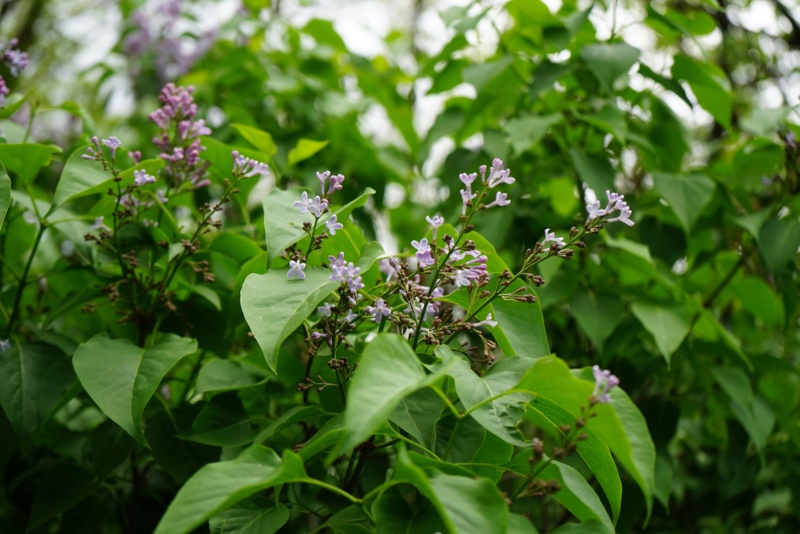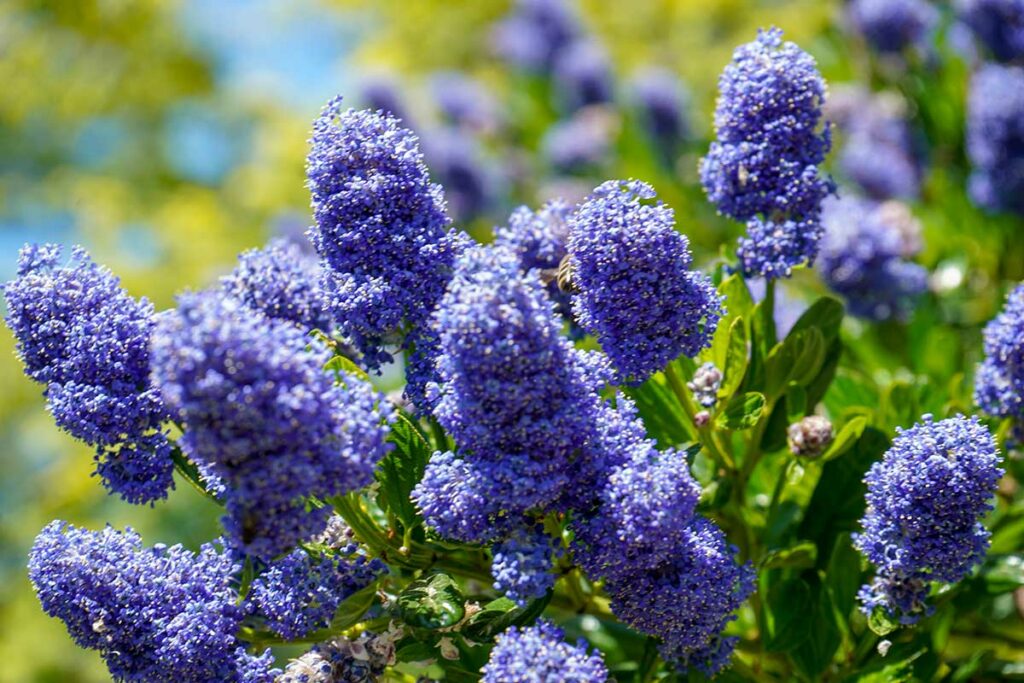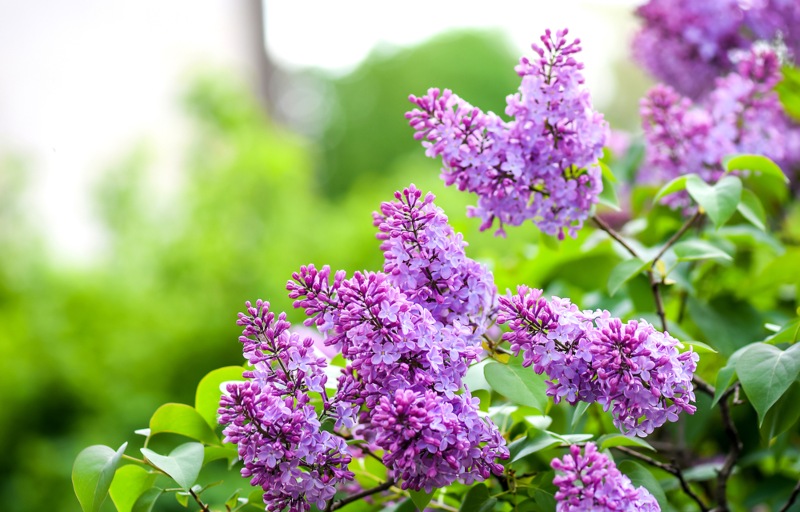
Lilacs are a beautiful and common flower found in households and gardens across the country. Known as the syringa vulgaris, lilacs bloom across the Northern United States from mid-spring to late spring and in Southern states from summer until fall.
Native to Southern Europe, lilacs usually bloom for an average of 3 weeks to 6 weeks, depending on their exact location, their soil quality, how they are cared for, and the weather pattern that year.
Low maintenance and relatively easy to grow for beginner gardeners and expert botanists alike, lilacs can stand from 5 feet to 15 feet tall every blooming season, depending on their type. This helps them attract butterflies who love their luscious and fragrant flowers, helping pollinate and increase a diverse and healthy ecosystem.
To learn more about growing and caring for lilacs, including how much light and water they need, continue reading below.
| Botanical Name: | Lilac (syringa vulgaris) |
| Common Name(s): | Lilac |
| Plant Type: | Herbaceous perennial shrub (frequently planted as an annual) |
| Mature Size: | 5 to 15 feet |
| Sun Exposure: | Full sun at least half of the day |
| Water Needs: | Deep watering infrequently |
| Soil Type: | Well-drained and humus-rich soil |
| Soil pH: | 6.5 – 7pH |
| Bloom Time: | Early Spring to Summer |
| Maintenance: | Low |
| Flower Color: | Purple, pink, pale violet |
| Hardiness Zones: | planted as annuals in most regions |
| Toxicity: | Not toxic to humans or pets |
Lilac Care
Lilacs are often considered one of the most low-maintenance plants to care for. Grown in bushes, these plants thrive in most gardens and are hardy enough that they do not wilt when left unattended for short amounts of time.
Lilacs prefer well-drained soil that is also rich in humus and is not overly acidic. When planted in pH-balanced soil, they will take compost soil well and absorb nutrients from fertilizer more easily.
While some people try to keep small lilac flowers growing in pots indoors, lilacs prefer to be outside where they have full access to the sun and can ground their roots into the earth. This will allow them to thrive and become tall, unlike in a pot.
Light
Lilac bushes always prefer to be in the full sun. While they can grow in partially sunny areas and occasionally somewhat shaded conditions, they will grow taller, fuller, brighter, and more fragrant when settled in full sunlight.
Since lilacs require at least half of a full day of sun, they should not be planted in corners, near tall buildings or fences, or beneath trees that will restrict their shade for more than a couple of hours. If trying to grow a lilac plant indoors, make sure to have a sun lamp pointing towards your plant all day long.
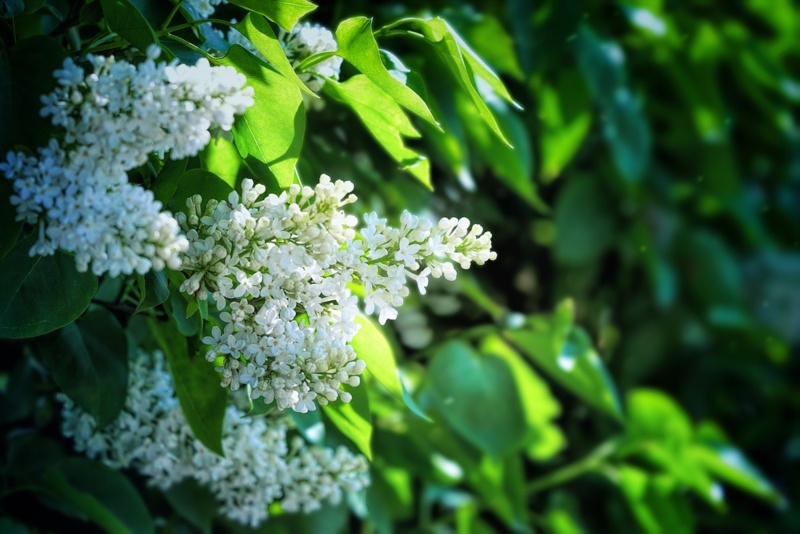
Water
Lilacs, whether indoor or outdoor, always do best with a thorough drenching. While they love deep watering so that all of their roots can have a refreshing drink, it is important not to drown them by watering them too frequently.
Watering once per week or a couple of times per week should be enough depending on the current weather in your location.
It is also crucial that you plant your lilacs in a place that has good drainage. If lilacs cannot drain, their roots will remain waterlogged, and they may refuse to bloom. Too much water in the roots of lilac can create pockets of air and end up choking the plant from the roots up. Sitting water can also create root rot, which will kill the plant entirely.
Temperature and Humidity
The best temperature for lilac is a moderate to cool summer temperature. This can be anywhere from 65 degrees Fahrenheit to 76 degrees Fahrenheit. Hot areas such as the mid-Southern states of the United States are too hot. Southeastern regions like Southern California are best.
High humidity, however, is not recommended. Lilacs generally thrive in moderate to less humid environments.
Soil
Lilacs always prefer balanced or even slightly alkaline soil with a pH level of 6.5 to 7 pH. They must always have well-draining soil that is high in natural compost or store-bought fertilizer. If the pH is too low, the lilac bushes will likely die.
Fertilizer
If you want to give your lilacs the best chance at survival, consider fertilizing them. The best fertilizer for your lilacs is a balanced fertilizer high in Nitrogen, Phosphorous, and Potassium. These nutrients help your lilac grow thick green leaves and allow them to bloom without becoming too heavy.
Are Lilacs Toxic?
Lilacs are considered one of the most common plants, partially due to their non-toxic qualities. Poison-free and non-irritating, they are the best plants for those with babies, small children, pets, and people with allergies.
Since lilacs are low in pollen, they do not aggravate sinuses the way that other blooming flowers might. They are also non-toxic to wildlife, so those with regular backyard visitors like rabbits, deer, raccoons, and moose may enjoy planting these flowers.
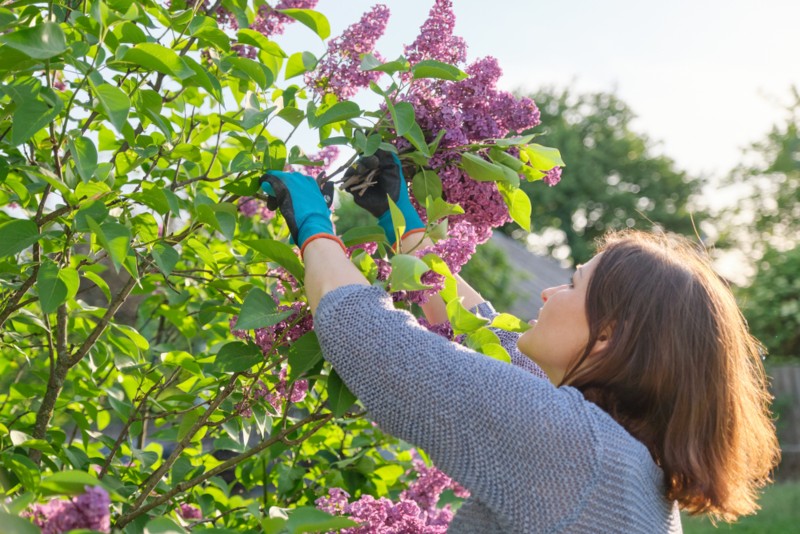
Potting and Re-potting Lilacs
While propagating lilacs is best in a pot, repotting lilacs is usually tricky and does not yield good results. Lilacs, once planted, do not like being moved unless you are digging up lilac to replant them outdoors. To do so, simply plant them in the ground and water them until their roots take to the new outdoor soil.
Propagating Lilac Bushes
Even though growing and caring for lilacs is considered easy, propagating lilac bushes from existing plants can be difficult. To propagate lilac bushes, take the following steps:
- Clip a few lilac cuttings from the branches of new growth in the early Spring.
- Make sure to cut the clippings in the morning. The weather should be somewhat cold, and you should water the plant.
- Clip 4 to 6 inches from the new growth.
- Strip the leaves of the cutting from the bottom, leaving only a couple of leaves on top.
- Get a ceramic or terracotta pot with all-purpose potting soil and sand. Make the mixture slightly wet.
- Make a small hole in the soil.
- Place the bottom of the clipping into the hole and pat down the soil around it.
- Put a few different lilac clippings into the same pot for better growth.
- Place the pot indoors in a warm location until it is fully grown.

